The Panhard EBR ETT (For Engin de Transport de Troupe/"troop transport vehicle") was an APC variant developed for platoons accompnying the standard EBR in reconnaissance units. Two prototypes were tested between 1956 and 1957, not adopted by the French Army but they nterested the Portuguese which already purchased the EBR. 28 units were thus built by Portuguese Army, integrated in its reconnaissance squadrons and used notably in its Colonial wars an the Carnation Revolution.

The original FL-10
The story of the ETT, one of the strangest APC ever built, is related to the development of the EBR, itself one of the most innovative postwar AFV designs, also one of the most unusual. It found its roots in the prewar Panhard 201 which specifications first came in 1938. A replacement for Panhard 178, still a 4x4 lacking off-road capabilities leading Panhard & Levassor to create their model 201, a very low-profile vehicle well suited to missioned in camouflaged positions, with four outer roadwheels, four inner metal wheels and a small 25 mm/37 mm SA37 remote cannon. Accepted as the AMP40, 600 were ordered in may 1940, we know what happened. The sole prototype was sent to North Africa and detroyed there.
In 1946, the French Army started to be reorganized, working on a serie of new armoured vehicles and concepts of heavy armed reconnaissance which led ultimately to a wheeled vehicle, the EBR, and a tracked vehicle, the AMX-13. The EBR for "Engin Blindé de Reconnaissance" (reconnaissance armoured vehicle) was presented by Panhard and basically resumed development of the 201, ending with a much larger larger Panhard 212. It had a symmetrical, low-profile hull with concentrated protection rear and front, two drivers for reverse driving, and instead of the impactical system, a brand new oscillating turret for a four-men crew and the flat, longitudinal opposing cylinders engine installed under the turret.
Development went on in the 1950s and even 1960s with new, more powerful 75 and 90 mm guns derived from the Panther's Rheinmetall own, and even at some point four additional ATGM Nord SS launchers. It was widely exported and replaced France on the map of armoured vehicle with a successful, yet unusual vehicle.
In Saumur, ex-Portuguese probably
At some point duing the process on establishing these new cold war armed reconnaissance groups, the French Army estimated it could be useful to have these EBRs accompanied by Infantry, which can bring extra eyes, performing screening missions, securing bridges and strong points before reinforcements arrive, and extra hands for maintenance.
Panhard was thus given in early 1956 (date unknown) the mission to modify the hull and make an armoured personal carrier out of the basic vehicle. This was done in record time, so that tests could start at the end of the year, and went on with the Army evaluation team in many terrans and weather configurations all along 1957 and 1958 as well. However the Army that year eventually found any issues with the design, notably the cramped and small troop compartment, despie it was basically the one used on the AMX-13 VTT. Eventually, production was not authorized and the program was terminated, as the tracked version was preferred.
The story could have ended there, if it was not for the Portuguese, which already deployed the EBR and were informed by Panhard of the existing variant. Given their appreciation of the EBR notably in Africa, they estimated the concept was sound and eventually after contract negociations obtained the purchase of 28 vehicles. It is not clear if the prototypes were to be sold as well since one is now on display at Saumur.
The commander is located behind in the raised troop compartment replacing the turret, in well sloped V-shape with armoured shutter on all sides. He stands in a one-man MG-equipped turret (tourelleau CAFL 38). The sides of the compartment, which is lower than on the standard EBR, are dotted with four pistol ports and two more armoured shutters, and two storage longitudinal boxes above the roadwheels, with the exhaust and ventilation for the engin close to the front of the compartment. Exit and access is from the two rear doors, opening outwards and each with their own armoured shutter.
Protection is the same as the EBR as for armour thickness, with the hull nose protected by 40mm (), and the compartment's sides by 20 mm (), the bottom 15 mm (), and the rooftop 10 mm (). The prototypes were not showing the CAFL turret but instead had two rotatable/fixed posts forward ad aft of the troop compartment with vision ports. The forward had a single one and probably rotated, but the rear one had three and was probably fixed. It is not known if the vehicle kept the driver's front two LMGs. For active protection, the vehicle carried four DREB smoke dischargers. They were installed by pairs in front of the troop compartment. In general, the vehicle shared the same components as the EBR 75 FL 10 and EBR 75 FL 11 armored cars.
The EBR ETT had the same amazing system as the armoured car, it was a 4x4 with standard axles and tires forward and aft, and two more axles with tractor style all metal wheels that were lowever in 8x8 mode on soft ground. The Suspension comprised coil springs but ground clearance, originally 340 to 420 mm now fell to 300-380 mm due to the deeper troop compartment. Fuel capacity remained the same at 370 liters of gasoline. for an operational range of 700 km (430 mi) and top speed up to 115 km/h (71 mph) down to 75 km/h (47 mph) on secondary roads and 25 km/h (16 mph) on rough terrain (these are the EBR figures, but the ETT was lighter and thus this was probably faster). The steering system as said above was now limited to the front axle.
It was installed to the right of the turret, which had five periscopes, one forward, two at angles on the sides. On top the turret had a two-piece small hatch for the commander that could peer above, buttoned-up. There was a night projector on its side. The ETT being a reconnaissance vehicle there was a powerful emitter/transmitter set with two large antennae on either side of the turret.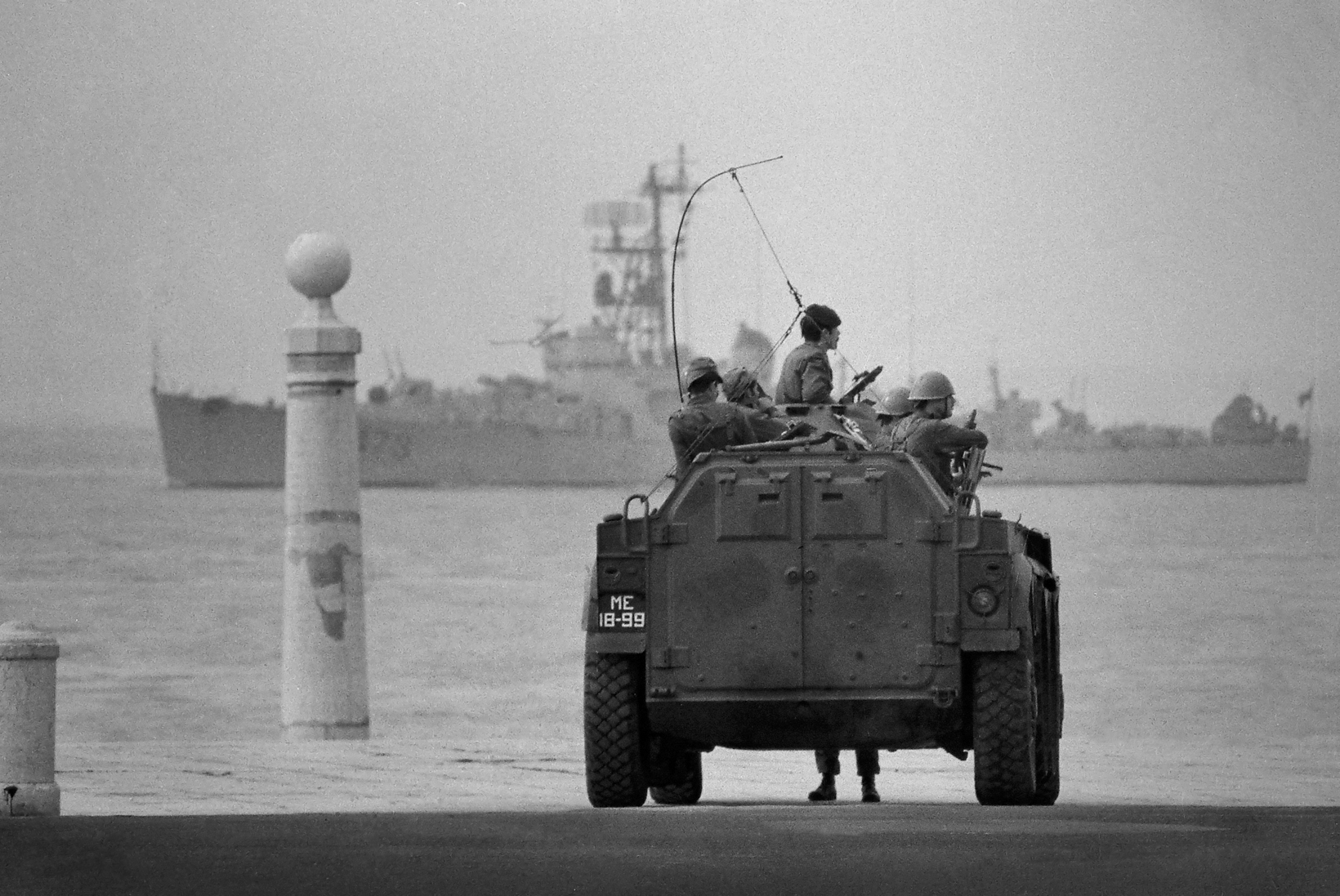
Frigate F-743 Pereira da Silva and ETT, src ALFREDO CUNHA. 09:15, REINFORCEMENT, An EPC force, with an AML and an ETI/Panhard, commanded by Ensign Sequeira Marcelino and aspirant Pedro Ricciardi, reinforce the siege of the Lisbon Military Region Headquarters, in São Sebastião da Pedreira.
A said above, Panhard approached the Portuguese with the ETT after its rejection by the French Army, in the hope that it could interest the army staff already using the standard EBR. Indeed an order of 28 vehicle was placed, and subsequentely built in 1959-60, then pressed it into service in their colonies, throughout the Colonial Wars in Angola, Mozambique and Guinea-Bissau. It was notably used by the Famous Dragões de Angola, a cavalry unit (1st Cavalry Group) in 1970-76. They were used in Mobile ground operations, patrol sweeps by armored car and reconnaissance vehicles comprising the Panhard AML, Panhard EBR, Fox and Chaimite.
But the EBR ETT also saw action in an infamous even for the history of Portugal, the Carnation revolution. In February 1974, Caetano (Estado Novo) decided to remove General António de Spínola from command in Guinea, facing opposition of Spínola, which with military officers opposing the war formed the MFA (Revolutionary Armed Forces Movement) to overthrow the government in a coup. This coup was largely supported by the population and used many armored vehicles, including the Panhard EBR, AML and ETT. No precise details are known about their use and location, but Lisbon.
Encyclopedia of Armoured Cars Duncan Crow & Robert J. Icks
Panhard Armoured Cars - AFV Weapons Profile #39 R.M. Ogorkiewicz
Wheeled Armoured Fighting Vehicles In Service B.T. White
en.topwar.ru
en.wikipedia.org
maquetland.com/
warwheels.net
acemodel.com.ua
chars-francais.net
afcvm.com
Development: The odd Panhard EBR

The original FL-10
The story of the ETT, one of the strangest APC ever built, is related to the development of the EBR, itself one of the most innovative postwar AFV designs, also one of the most unusual. It found its roots in the prewar Panhard 201 which specifications first came in 1938. A replacement for Panhard 178, still a 4x4 lacking off-road capabilities leading Panhard & Levassor to create their model 201, a very low-profile vehicle well suited to missioned in camouflaged positions, with four outer roadwheels, four inner metal wheels and a small 25 mm/37 mm SA37 remote cannon. Accepted as the AMP40, 600 were ordered in may 1940, we know what happened. The sole prototype was sent to North Africa and detroyed there.
In 1946, the French Army started to be reorganized, working on a serie of new armoured vehicles and concepts of heavy armed reconnaissance which led ultimately to a wheeled vehicle, the EBR, and a tracked vehicle, the AMX-13. The EBR for "Engin Blindé de Reconnaissance" (reconnaissance armoured vehicle) was presented by Panhard and basically resumed development of the 201, ending with a much larger larger Panhard 212. It had a symmetrical, low-profile hull with concentrated protection rear and front, two drivers for reverse driving, and instead of the impactical system, a brand new oscillating turret for a four-men crew and the flat, longitudinal opposing cylinders engine installed under the turret.
Development went on in the 1950s and even 1960s with new, more powerful 75 and 90 mm guns derived from the Panther's Rheinmetall own, and even at some point four additional ATGM Nord SS launchers. It was widely exported and replaced France on the map of armoured vehicle with a successful, yet unusual vehicle.
Development: The EBR ETT

In Saumur, ex-Portuguese probably
At some point duing the process on establishing these new cold war armed reconnaissance groups, the French Army estimated it could be useful to have these EBRs accompanied by Infantry, which can bring extra eyes, performing screening missions, securing bridges and strong points before reinforcements arrive, and extra hands for maintenance.
Panhard was thus given in early 1956 (date unknown) the mission to modify the hull and make an armoured personal carrier out of the basic vehicle. This was done in record time, so that tests could start at the end of the year, and went on with the Army evaluation team in many terrans and weather configurations all along 1957 and 1958 as well. However the Army that year eventually found any issues with the design, notably the cramped and small troop compartment, despie it was basically the one used on the AMX-13 VTT. Eventually, production was not authorized and the program was terminated, as the tracked version was preferred.
The story could have ended there, if it was not for the Portuguese, which already deployed the EBR and were informed by Panhard of the existing variant. Given their appreciation of the EBR notably in Africa, they estimated the concept was sound and eventually after contract negociations obtained the purchase of 28 vehicles. It is not clear if the prototypes were to be sold as well since one is now on display at Saumur.
Design
Hull Modifications
The basic hull of the EBR was modified a great deal: If the general configuration was kept unchanged, the transport compartment installed at the rear is inspired by that installed on the AMX 13 VCI. However compared to the EBR, the rear wheels are no longer steered, and of course the rear driver position is eliminated, but the gerabox reverser is retained, ebabling high reverse speeds. The front driver's position remains the same. He is seated in a laying low position in the nose, with a small two-piece hatch and bulletproof glass as well as three periscopes.The commander is located behind in the raised troop compartment replacing the turret, in well sloped V-shape with armoured shutter on all sides. He stands in a one-man MG-equipped turret (tourelleau CAFL 38). The sides of the compartment, which is lower than on the standard EBR, are dotted with four pistol ports and two more armoured shutters, and two storage longitudinal boxes above the roadwheels, with the exhaust and ventilation for the engin close to the front of the compartment. Exit and access is from the two rear doors, opening outwards and each with their own armoured shutter.
Protection is the same as the EBR as for armour thickness, with the hull nose protected by 40mm (), and the compartment's sides by 20 mm (), the bottom 15 mm (), and the rooftop 10 mm (). The prototypes were not showing the CAFL turret but instead had two rotatable/fixed posts forward ad aft of the troop compartment with vision ports. The forward had a single one and probably rotated, but the rear one had three and was probably fixed. It is not known if the vehicle kept the driver's front two LMGs. For active protection, the vehicle carried four DREB smoke dischargers. They were installed by pairs in front of the troop compartment. In general, the vehicle shared the same components as the EBR 75 FL 10 and EBR 75 FL 11 armored cars.
Powerpack and performances
To gain time in development, the engine was the same and left in the exact same position, in the middle, and below the troop compartment. A trap was installed above for access, but it was maintained by using lateral collectors. This was a Panhard 12 H 6000 S flat-twelve gasoline engine rated for 200 hp at 3,700 RPM, wih a Power/weight probably superior to the standard EBR, at 16 hp/tonne. It was connected a single 4-speed gearbox providing a total of 8 different gear ratios, unlike the original system which had a tandem transmission, due to the troop compartment.The EBR ETT had the same amazing system as the armoured car, it was a 4x4 with standard axles and tires forward and aft, and two more axles with tractor style all metal wheels that were lowever in 8x8 mode on soft ground. The Suspension comprised coil springs but ground clearance, originally 340 to 420 mm now fell to 300-380 mm due to the deeper troop compartment. Fuel capacity remained the same at 370 liters of gasoline. for an operational range of 700 km (430 mi) and top speed up to 115 km/h (71 mph) down to 75 km/h (47 mph) on secondary roads and 25 km/h (16 mph) on rough terrain (these are the EBR figures, but the ETT was lighter and thus this was probably faster). The steering system as said above was now limited to the front axle.
Armament
The original armoured car was famously armed with a 7.5 mm gun in its first version, later 90mm, and five MAC31 Reibel 7.5 mm machine guns in some case mounted in the hull fore and aft (fixes) while the last was coaxial in the turret. On the ETT as delivered to the Portuguese, the turret CAFL 38 is the only known armament. The mount could be changed for another MG of standard caliber. According to other sources it could also fit a larger 12.7 mm HMG (Likely Browning M2HB) but due to size constraints it's unlikely. The Portuguese installed a cal.03 Browning M1919A4.It was installed to the right of the turret, which had five periscopes, one forward, two at angles on the sides. On top the turret had a two-piece small hatch for the commander that could peer above, buttoned-up. There was a night projector on its side. The ETT being a reconnaissance vehicle there was a powerful emitter/transmitter set with two large antennae on either side of the turret.
The Panhard EBR ETT in service

Frigate F-743 Pereira da Silva and ETT, src ALFREDO CUNHA. 09:15, REINFORCEMENT, An EPC force, with an AML and an ETI/Panhard, commanded by Ensign Sequeira Marcelino and aspirant Pedro Ricciardi, reinforce the siege of the Lisbon Military Region Headquarters, in São Sebastião da Pedreira.
A said above, Panhard approached the Portuguese with the ETT after its rejection by the French Army, in the hope that it could interest the army staff already using the standard EBR. Indeed an order of 28 vehicle was placed, and subsequentely built in 1959-60, then pressed it into service in their colonies, throughout the Colonial Wars in Angola, Mozambique and Guinea-Bissau. It was notably used by the Famous Dragões de Angola, a cavalry unit (1st Cavalry Group) in 1970-76. They were used in Mobile ground operations, patrol sweeps by armored car and reconnaissance vehicles comprising the Panhard AML, Panhard EBR, Fox and Chaimite.
But the EBR ETT also saw action in an infamous even for the history of Portugal, the Carnation revolution. In February 1974, Caetano (Estado Novo) decided to remove General António de Spínola from command in Guinea, facing opposition of Spínola, which with military officers opposing the war formed the MFA (Revolutionary Armed Forces Movement) to overthrow the government in a coup. This coup was largely supported by the population and used many armored vehicles, including the Panhard EBR, AML and ETT. No precise details are known about their use and location, but Lisbon.
Sources
"Eight-Wheeler" (February 2019 Issue of Classic Military Vehicle Magazine), David FletcherEncyclopedia of Armoured Cars Duncan Crow & Robert J. Icks
Panhard Armoured Cars - AFV Weapons Profile #39 R.M. Ogorkiewicz
Wheeled Armoured Fighting Vehicles In Service B.T. White
en.topwar.ru
en.wikipedia.org
maquetland.com/
warwheels.net
acemodel.com.ua
chars-francais.net
afcvm.com
EBR ETT (1957) | |
| Dimensions (l-w-h): | c6.15 oa x 2.42 x 2.24 m (20.2 x 7.1 x 7.4 in) |
| Total weight, battle ready: | 15 Tons (30,000 ibs) |
| Crew : | 14 (Driver, Commander, 12 troops) |
| Propulsion: | Panhard gasoline, 12-cylinder flat water-cooled 200 hp |
| Suspensions: | Torsion arms |
| Top Speed | c105 kph(65 mph) 30-70 kph off-road |
| Range (road)/Fuel consumption | 380 km (250 mi) for 380L - 50L/100 |
| Armament (see notes) | CAFL38 turret 7,5mm (0.3 in) MAC Reibel Mgs 4,500 rounds |
| Armour | Hull nose and turret 40, sides 20, bottom 15, rooftop 10 mm |
| Total Production | 30 including prototypes |
Gallery
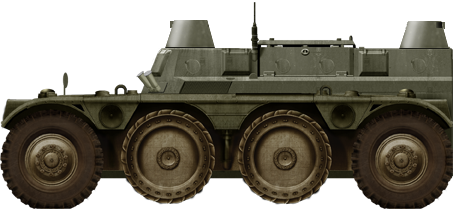
French Prototype, 1956.
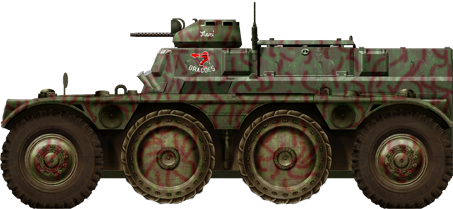
ETT of the Dragoes de Angola, 1st Cav. Group Angola 1973
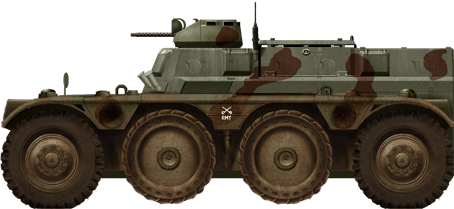
ETT in Lisbon, April 1974, Carnation Revolution

Preserved Portuguese ETT

Side view, Saumur
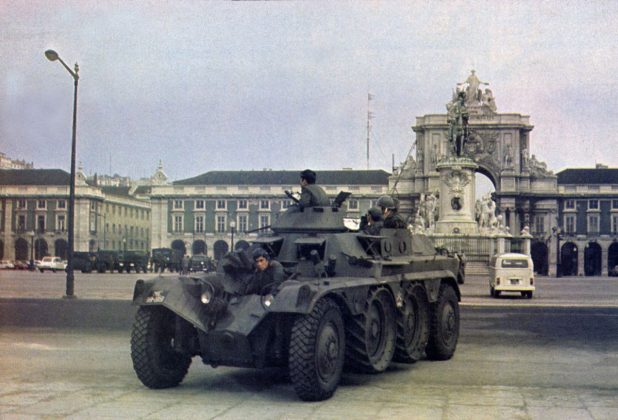
Portuguese vehicle, Carnation Revolution
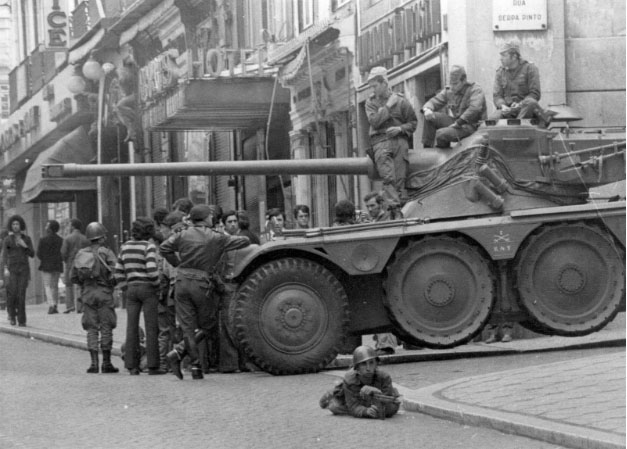
Portuguese vehicle, Carnation Revolution
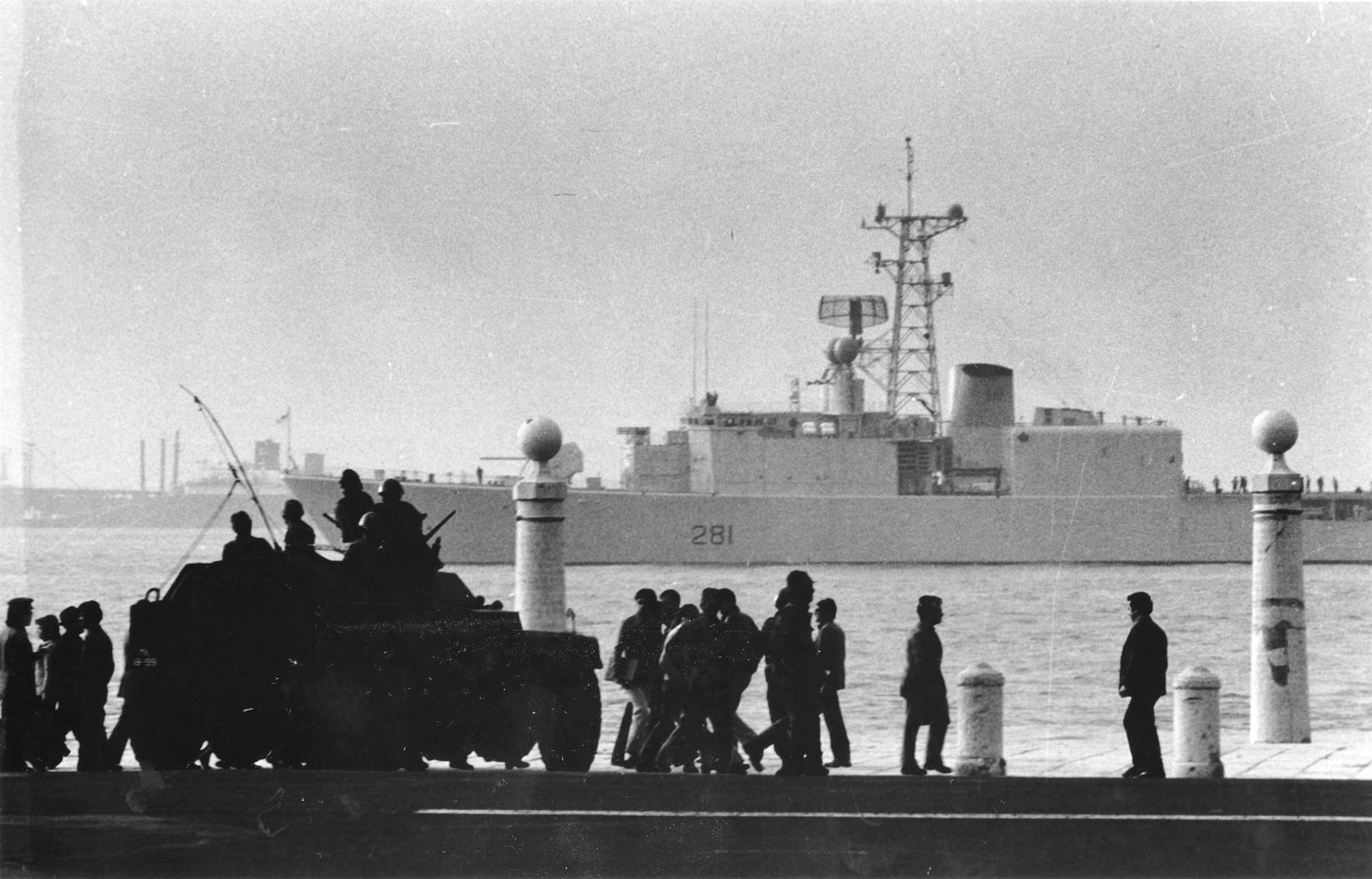
Portuguese ETT in Lisbon harbour and Canadian Frigate in observance
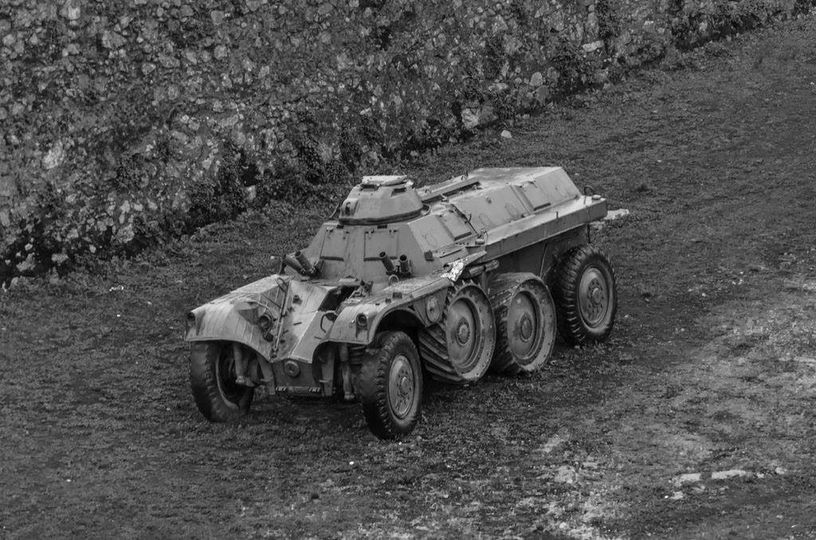
Portuguese vehicle, Carnation Revolution

Carnation revolution, on a plaza in Lisbon 25 April 1974src
Same, colored photo src
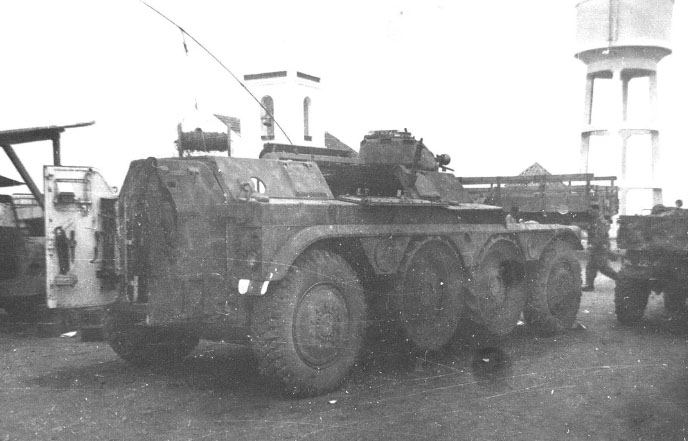
Camouflaged ETT in Angola src

Cold War Tanks


































Cold war tanks posters

Cold War Main Battle Tanks

Cold War Soviet Army
Museums, Movies, Books & Games
The Tanks and Armor in pop culture
Tanks and armored vehicles in general are only really grasped when seen first person: The mass, the scale, it's all there. Explore also the way tanks were covered in the movie industry, in books and in video games.Movies:
Best tanks movie on warhistoryonline.com
On imdb.com
On bestsimilar.com/
miltours.com
liveabout.com/
watchmojo.com
Video Games:
pcgamesn.com
historyhit.com
levvvel.com
vg247.com/best-tank-games
mmobomb.com/
alienwarearena.com


